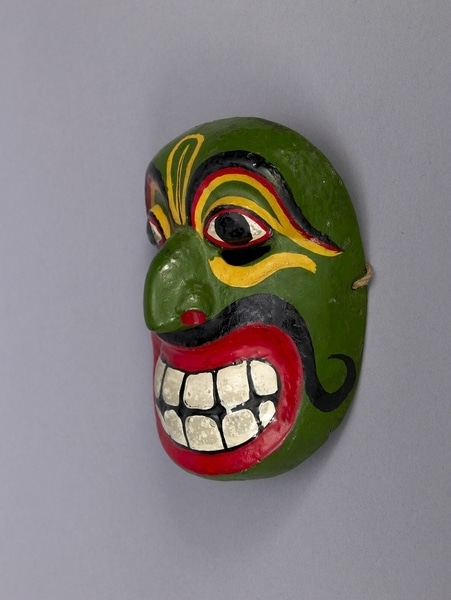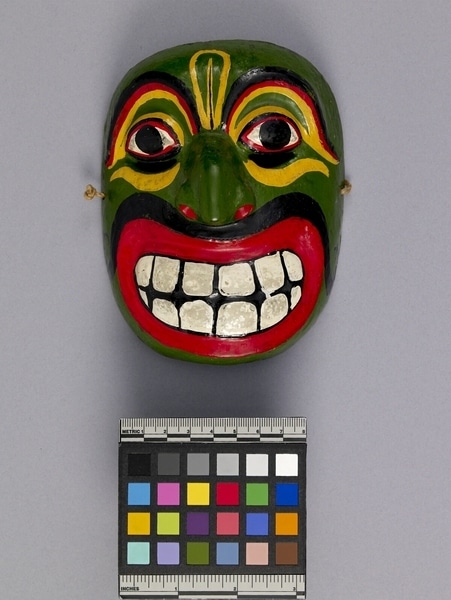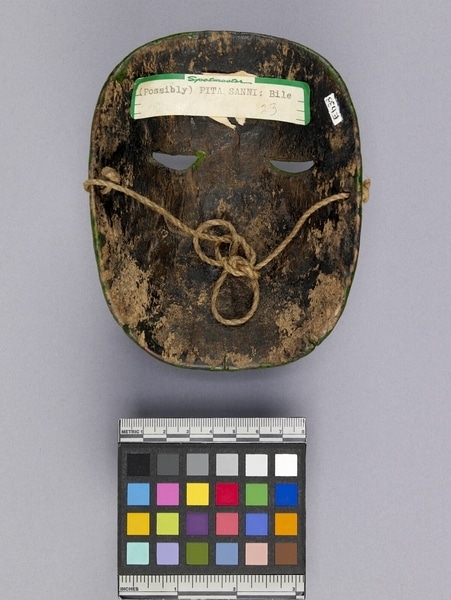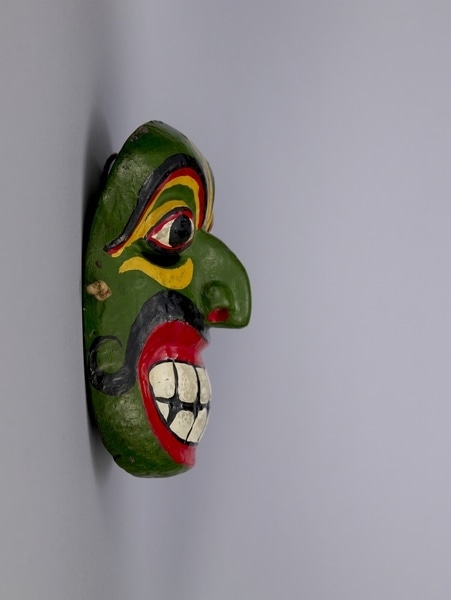Mask Item Number: Eh38 from the MOA: University of British Columbia




Description
Mask possibly depicting Pita Sanniya (which represents bile) with eyes that have white sclerae, black pupils, and are outlined in red. The eyebrows are black, red, and yellow and there is a plume-like, yellow motif with small vertical stripe between eyes and there are crescent-shaped slits beneath the eyes. The mask also has a big nose with red nostrils and a large open mouth with thick red lips and white teeth outlined in black. A black moustache curls upwards at the sides. Plant fibre twine is attached through a hole on either side of the mask. Label on reverse at top reads, "(Possibly) Pita Sanni: bile" in typed letters, and "23" in pencil.
History Of Use
Worn during curing ritual of the Sanni Yakuma ceremony, part of the Tovil series of dramas performed by Sinhalese ritual specialists and dancers. The Sanni Yakuma is intended to combat diseases and afflictions caused by the Sanni group of demons. These consist of 18 or more apparitions of the chief demon, Maha-kola-sanni. The officiating healer honours Buddha, then appeases the demons with offerings, dancing, and chanting. Pita Sanni is the demon associated with excess bile complaints, and is probably represented by this mask.
Cultural Context
Exorcism
Iconographic Meaning
Green colour of face is associated with demons
Item History
- Made in Sri Lanka before 1978
- Collected during 1978
- Owned by Jason Schoonover before February 10, 1981
- Received from Museum of Anthropology Shop Volunteers (Funding source) and Jason Schoonover (Seller) on February 10, 1981
What
Who
- Culture
- Sinhalese
- Previous Owner
- Jason Schoonover
- Received from
- Museum of Anthropology Shop Volunteers (Funding source) and Jason Schoonover (Seller)
Where
- Holding Institution
- MOA: University of British Columbia
- Made in
- Sri Lanka
When
- Creation Date
- before 1978
- Collection Date
- during 1978
- Ownership Date
- before February 10, 1981
- Acquisition Date
- on February 10, 1981
Other
- Condition
- fair
- Current Location
- Case 107
- Accession Number
- 0704/0037